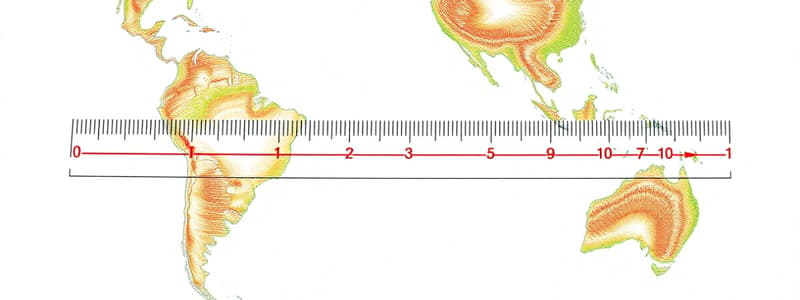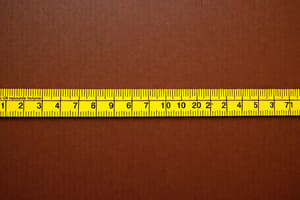Podcast
Questions and Answers
Which of the following statements accurately describes the primary function of the Richter Scale?
Which of the following statements accurately describes the primary function of the Richter Scale?
- To measure the total amount of damage caused by an earthquake in a specific area; this is calculated by studying the destruction to local infrastructure.
- To predict the likelihood of future earthquakes based on historical patterns of seismic activity.
- To objectively measure the magnitude of an earthquake by quantifying the energy released and ground shaking, using seismograph measurements. (correct)
- To visually represent the seismic waves produced by earthquakes.
Charles Richter's path to creating the Richter Scale involved a shift in his academic focus. Which statement accurately reflects this transition?
Charles Richter's path to creating the Richter Scale involved a shift in his academic focus. Which statement accurately reflects this transition?
- Before inventing the Richter scale, Richter was a mathematician.
- Richter always had an interest in studying seismology.
- Richter initially worked as a civil engineer before transitioning to seismology after experiencing a major earthquake.
- Richter started as a physics student and later became involved in seismology due to an invitation from a professor at the California Institute of Technology. (correct)
The Richter scale utilizes a logarithmic equation to measure earthquake magnitude, particularly for earthquakes of medium strength. Considering this fact, what does an increase of one whole number on the Richter scale represent?
The Richter scale utilizes a logarithmic equation to measure earthquake magnitude, particularly for earthquakes of medium strength. Considering this fact, what does an increase of one whole number on the Richter scale represent?
- A tenfold increase in the measured amplitude on a seismograph. (correct)
- An equivalent linear increase in the energy released by the earthquake.
- A doubling of the earthquake's magnitude.
- A halving of the earthquake's potential to cause damage.
A seismograph is a vital instrument used in conjunction with the Richter Scale. What is the primary role of a seismograph in measuring earthquakes?
A seismograph is a vital instrument used in conjunction with the Richter Scale. What is the primary role of a seismograph in measuring earthquakes?
The Richter Scale measures earthquakes with magnitudes typically ranging from 1 to 10, including fraction values such as 0.7 or 5.3. How would you classify an earthquake measuring 6.2 on the Richter Scale?
The Richter Scale measures earthquakes with magnitudes typically ranging from 1 to 10, including fraction values such as 0.7 or 5.3. How would you classify an earthquake measuring 6.2 on the Richter Scale?
Flashcards
What is the Richter Scale?
What is the Richter Scale?
A system for measuring the strength/magnitude of an earthquake.
Who is a seismologist?
Who is a seismologist?
A scientist who studies earthquakes.
Who is Charles Richter?
Who is Charles Richter?
He invented the Richter Scale in 1935.
How the Richter Scale Mainly Measures
How the Richter Scale Mainly Measures
Signup and view all the flashcards
What is a seismograph?
What is a seismograph?
Signup and view all the flashcards
Study Notes
- Used to measure the magnitude or strength of an earthquake.
- Measures ground shaking and released energy.
- Measurements cannot be physically seen.
- Measures intensity but not destruction, as destruction depends on multiple factors.
- Invented in 1935 by seismologist Charles Richter (1900-1985).
- Richter studied physics and had no connection to seismology when he was approached by a professor to work in their seismology lab.
- Richter was an assistant to seismologist Beno Gutenburg at the Carnegie Institution in Pasadena, California when he invented it.
- Originally focused on earthquakes in Southern California, but now used worldwide.
Importance and Uses
- Plays a significant role in measuring energy emitted from earthquakes.
- Commonly used by seismologists to classify the magnitude of earthquakes around the world.
- Measures moderate-sized earthquakes (magnitudes 3-7) using a logarithmic equation.
How Earthquakes are Measured
- Ranges from magnitude 1 (smallest) to magnitude 10 (largest).
- Intensity can be measured in fractions.
- Measures magnitude through a seismograph via seismic activity.
- Seismograph detects and records earthquakes.
- Seismic activity is ground movement from breaking rocks.
- Magnitude is determined after the seismograph calibrates the largest seismic wave, then the logarithm of the amplitude of this wave (height) is taken.
- Accuracy depends on proximity; closer earthquakes yield more accurate readings.
- Accuracy depends on the seismograph type.
- Less accurate for earthquakes with a magnitude of 6.5 and higher due to seismograph limitations.
- Measurement of energy released is underestimated for higher magnitude earthquakes.
Richter Scale as Logarithmic
- For each increase on the scale, ground shaking increases 10 times.
- Energy released increases approximately 32-fold for each unit increase.
- An increase from magnitude 4 to magnitude 8 results in an energy intensity increase of 1,048,576 times.
- Increasing from a magnitude 3 to a magnitude 4 would lead to only 32 times increase in intensity.
Moment Magnitude Scale
- The moment magnitude scale was developed in 1979 to work with the Richter scale.
- More accurate for measuring destructive earthquakes with a magnitude of over 8.
- Uses seismic moment instead of the amplitude of the highest seismic wave.
- Seismic moment is the force needed to move a fault multiplied by the fault's displacement across the area.
- Also uses a seismograph to determine overall magnitude.
Studying That Suits You
Use AI to generate personalized quizzes and flashcards to suit your learning preferences.




